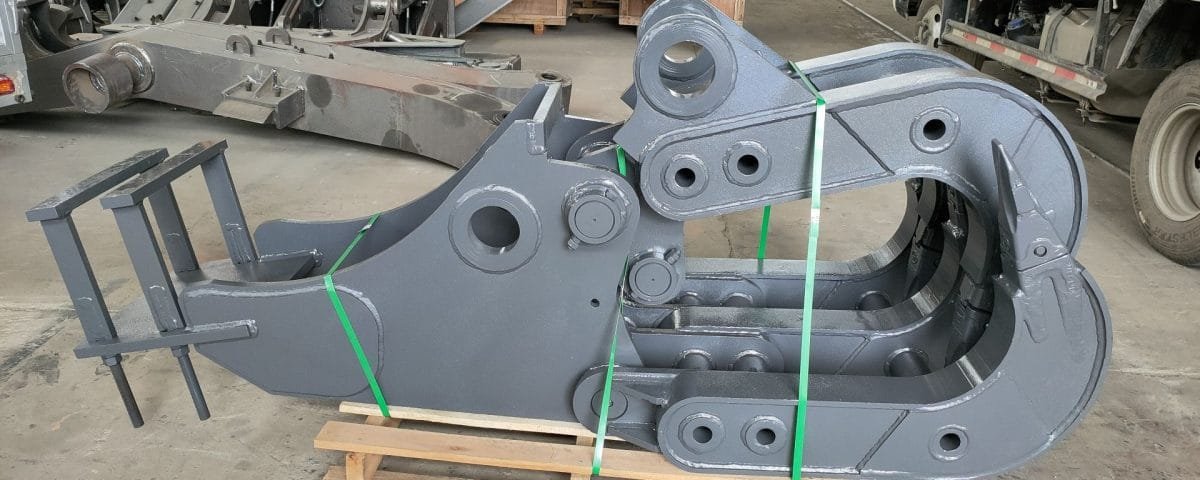
A new era of efficient disassembly: How the Vehicle Dismantler Machine reshapes the automobile recycling industry
2025-04-29
Hydraulic crusher: efficient processing of concrete counterweights and metal recycling
2025-05-13–Taking earthquake and typhoon disaster scenes as examples
When natural disasters such as earthquakes and typhoons strike, the ruins of collapsed buildings are often piled with a large number of twisted and deformed steel bars, metal frames and concrete fragments. These ruins not only block the rescue channel, but also may cause secondary collapse risks due to the instability of the metal structure. How to quickly and safely clean up the metal waste in the ruins after the disaster has become one of the key challenges for emergency rescue and post-disaster reconstruction. The scrap steel dismantling machine is showing its unique value in this field with its high efficiency and adaptability.
Pain points and needs of post-disaster ruins cleaning
Time urgency: The road needs to be opened quickly during the golden rescue period. Traditional manual cutting or mechanical crushing is inefficient and difficult to meet emergency needs.
Operation safety: The steel bars in the ruins are exposed and the structure is fragile. Manual operation is prone to secondary injuries; metal and concrete are mixed, and ordinary equipment is difficult to accurately separate.
Resource recovery needs: If a large amount of metal waste generated by disasters is directly buried, it will waste resources and pollute the environment, and efficient recycling methods are needed.
Advantages of post-disaster application of scrap steel dismantling machine
Quick response and flexible adaptation
The equipment can be directly adapted to 20-ton excavators, driven by its hydraulic system, without the need for additional power sources, and can be quickly deployed in the disaster area without power outages.
The working radius can be customized to adapt to complex terrains such as narrow streets and high-risk ruins, avoiding the problem of difficulty in bringing large equipment to the site.
Efficient crushing and precise separation
For structures such as steel mesh and metal frames, the shearing and tearing modules designed with high-strength manganese steel plates can be quickly cut and decomposed into easily transportable fragments, with a daily processing capacity of tens of tons.
Combined with auxiliary tools such as ground pile hooks, the preliminary sorting of metal and concrete is achieved, reducing the subsequent sorting pressure.
Double guarantee of safety and environmental protection
The remote control design keeps operators away from dangerous areas and reduces the risks of aftershocks or structural collapse.
The low-noise, dust-free operation mode avoids secondary burdens on the disaster area environment, and the recovered metals can be directly sent to the steel plant for recycling.
Practical case: The synergy between technology and rescue
Take a certain earthquake-stricken area as an example. A six-story residential building in the ruins completely collapsed, and the internal steel bars were crisscrossed. Traditional equipment could not penetrate into the core area due to its limited size. The rescue team called an excavator adapted for the scrap steel dismantling machine to complete the cutting and cleaning of the main metal frame within 48 hours, freeing up the rescue channel and recycling nearly 80 tons of steel waste. Subsequently, using these recycled steel materials, the local area rebuilt temporary resettlement houses to achieve the recycling of “ruin resources”.
Want to learn more about the application of scrap steel dismantling machines in scrapped car dismantling and industrial waste treatment? Click to view:
https://www.hydraulicdevice.com/compatible-with-20-ton-excavator-ground-pile-hook-pesco-hydraulic-baler-and-dismantler-efficiently-crushes-scrap-steel-briquettes/
https://www.hydraulicdevice.com/innovative-scrap-dismantler-a-cost-effective-and-customizable-helper-machine/



